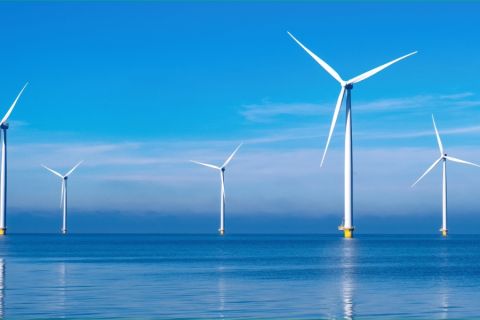
Carbon emissions. (Source: Shutterstock)
The carbon capture and storage (CCS) industry finds itself in its awkward adolescence, as economic and regulatory hurdles remain to be sorted out.
But globally, major economic powers are beginning to move toward carbon storage as a key method for tackling climate change, panelists said at Hart Energy’s Carbon & ESG Strategies conference.
Backed by billions of dollars in tax incentives, the U.S. leads the world with the number of CCS projects planned. In Canada, Europe and the U.K., policies and regulations have helped create an environment that assists early project deployment. Asia and the Middle East are also beginning to explore or develop CCS projects.
At the fore is the oil and gas industry, which has a key competitive advantage in developing CCS projects: experience dealing with the subsurface, seismic data sets and large energy projects, said Rachel Schelble, Wood Mackenzie head of corporate carbon management and infrastructure, at the conference.
“We expect this to emerge as a primary decarbonization objective for many oil and gas companies,” Schelble said. “Carbon capture and storage is still a very small industry globally—we estimate capacity needs to increase more than 100-fold by 2050. In 2022, carbon capture and storage projects in North America accounted for over two-thirds of global capacity.”
The Global CCS Institute sees climate science as clear and CCS as a tool for reducing atmospheric CO2.
“To limit warming to below 1.5 C, we need to curtail our global emissions so that we reach net-zero emissions by mid-century,” said Christina Staib, the institute’s global finance sector lead. “CCS is a technology that can significantly reduce CO2 emissions at their source—that’s called point source capture and address CO2 already in the atmosphere via what’s called carbon dioxide removal.”
CCS gaining pace in the U.K. and Europe
While the Inflation Reduction Act prompted U.S. projects to move forward, every geography region “will have its own combination of carrots and sticks,” said Staib, who has more than 25 years of experience in the energy, environment, engineering and finance sectors.
In Canada, there is a carbon price through 2030 that, when combined with other incentives, is helping to move CCS forward, she said.
Across the Atlantic, Staib said there is a structured, competitive cluster process being run by the U.K. government that includes investment in CO2 infrastructure and R&D. The U.K. has announced an ambition to capture 20 million tonnes per annum (mtpa) to 30 mtpa by 2030.
RELATED
Permits, Policy, Profit: The Hang-ups with Large-scale CO2 Projects
The U.K. has also awarded 20 licenses for carbon storage and has a compliance-based carbon market, the U.K. Emissions Trading Scheme, Staib said.
“Europe has CCS projects operating and in construction. In terms of policy drivers, there is a binding climate neutrality target by 2050,” she said. “They also have the EU ETS [EU Emissions Trading System] which is a compliance-based carbon trading system,” Staib said.
The EU ETS is a cornerstone of the region's “policy to combat climate change and its key tool for reducing greenhouse gas emissions cost-effectively,” according to the EU’s website. It’s the world's first major carbon market and remains the biggest one.
While Norway and Denmark are the current leaders in activity in Europe, storage permits are being issued in Denmark and Italy.
“In Europe, business models for CCS are still coming together but activity is expected to increase as CCS networks are fundamental to EU climate ambitions,” Staib said.
In the U.K. and Europe, the largest energy companies are on board with CCS.
France’s TotalEnergies and the U.K.’s Shell will both rely on CCS in their push to reach net zero emissions by 2050. Shell is also eyeing development of a CO2 storage capacity of over 10 mtpa by 2030. Also in the U.K., BP is leading one of the country’s first CCS clusters to safely transport and store millions of tonnes of CO2 emissions.
In Norway, Equinor is actively pursuing ways to make CCS commercially viable in the decarbonized energy systems of the future, while in Spain, Repsol eyes CCS in the subsurface to abate CO2 emissions as part of its vision to reach net zero emissions by 2050.
Middle East, Asia eying CCS
For the rest of the world, a combination of climate ambitions, goals and country-specific incentives and disincentives serve as policy drivers, Staib said.
In the Middle East, a number of CCS projects are in operation or under construction. Additionally, large projects and hubs have been announced along with plans for carbon markets. COP 28, which will be held in the United Arab Emirates this year, is looking to have a stronger focus on CCS to reduce emissions.
CCS projects are also in operation or under construction in China, Southeast Asia and Australia. Southeast Asian countries have also expressed interest in forming CO2 management partnerships between one another, Staib said.
And the Japanese government is implementing a roadmap for CCS that recently identified seven projects for a feasibility study.
With limited geologic storage, Japan is also focused on the development of CO2 shipping.
Recommended Reading
Guyana’s Stabroek Boosts Production as Chevron Watches, Waits
2024-04-25 - Chevron Corp.’s planned $53 billion acquisition of Hess Corp. could potentially close in 2025, but in the meantime, the California-based energy giant is in a “read only” mode as an Exxon Mobil-led consortium boosts Guyana production.
US Interior Department Releases Offshore Wind Lease Schedule
2024-04-24 - The U.S. Interior Department’s schedule includes up to a dozen lease sales through 2028 for offshore wind, compared to three for oil and gas lease sales through 2029.
Mexico Presidential Hopeful Sheinbaum Emphasizes Energy Sovereignty
2024-04-24 - Claudia Sheinbaum, vying to becoming Mexico’s next president this summer, says she isn’t in favor of an absolute privatization of the energy sector but she isn’t against private investments either.
Venture Global Gets FERC Nod to Process Gas for LNG
2024-04-23 - Venture Global’s massive export terminal will change natural gas flows across the Gulf of Mexico but its Plaquemines LNG export terminal may still be years away from delivering LNG to long-term customers.





